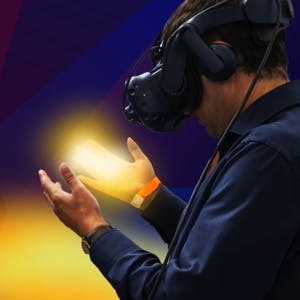- Home
- All updates
- EDGE Insights
- Industries
- Company Search
- My Watchlists (Beta)
All updates
Apple announces Vision Pro AR headset at WWDC; to retail at USD 3,499 by early 2024
Moment Energy secures USD 20.3 million in government funding from US Department of Energy
Fluence Energy raises USD 300 million in convertible notes to upgrade battery production
Fraction AI raises USD 6 million in pre-seed funding to scale hybrid data labeling
Coralogix acquires AI observability platform Aporia for USD 50 million
Pimax announces compact Dream Air VR headset for USD 1,900
HuLoop raises Series A funding from Mighty Capital
Fiserv to acquire Payfare for undisclosed sum to enhance embedded finance solutions
Fiserv to acquire Payfare for undisclosed sum to enhance embedded finance solutions
Meight raises EUR 3.4 million in funding led by Cusp Capital
Desktop Metal sues Nano Dimension over merger compliance

Extended Reality
Apple announces Vision Pro AR headset at WWDC; to retail at USD 3,499 by early 2024
-
Apple announced its first AR headset, Vision Pro, at the WWDC conference, set to retail at USD 3,499 by early 2024 with release planned in the US, although availability in other countries are likely to follow.
-
The Vision Pro, designed for consumer use, incorporates an aluminum frame, an M2 chip, an R1 video streaming chip, micro-OLED displays with 64 pixels in the space of an iPhone pixel, and an external pocket battery with around two hours of battery life. It features its proprietary "EyeSight" technology that displays the wearer's eyes on the front-facing screen, compensating for the opaque visor. FaceTime is anticipated to be a major application, utilizing spatial avatars that mimic the user's appearance and gestures through pre-scans and neural scanning technology. The headset also offers spatial photography and videography capabilities, delivering an immersive theater-like experience alongside Zeiss' custom prescription glass inserts.
-
The new VisionOS, specifically developed for spatial computing, enables the projection of the Mac desktop, interaction with 2D iPhone photos, and compatibility with teleconferencing services and Microsoft Office apps. Additionally, Apple will have a new App Store exclusive for the headset and Unity collaboration for game development.
-
Analyst QuickTake: The Vision Pro’s price point is comparable to that of Microsoft’s HoloLens 2 priced at USD 3,500 , as opposed to focusing on consumer-grade headsets such as Meta’s Quest 3, set to retail at USD 499 . Key differentiating features from the HoloLens 2 include spatial audio using Apple’s “audio ray tracing” technology and a potentially superior screen resolution of more than 4K per eye, translating to 23 million pixels on the screen.
Contact us
By using this site, you agree to allow SPEEDA Edge and our partners to use cookies for analytics and personalization. Visit our privacy policy for more information about our data collection practices.